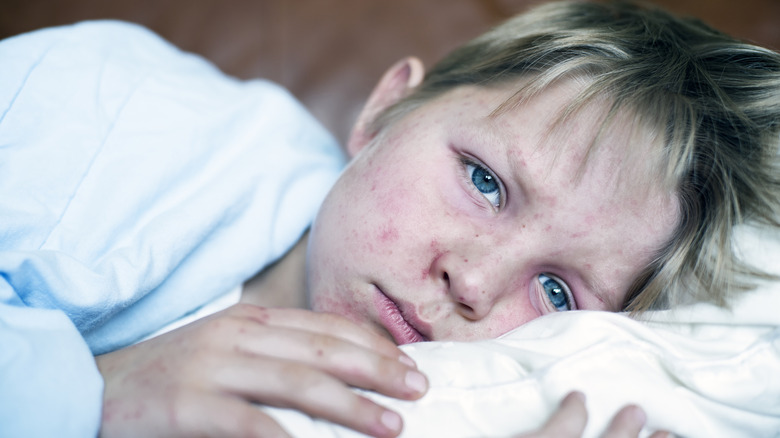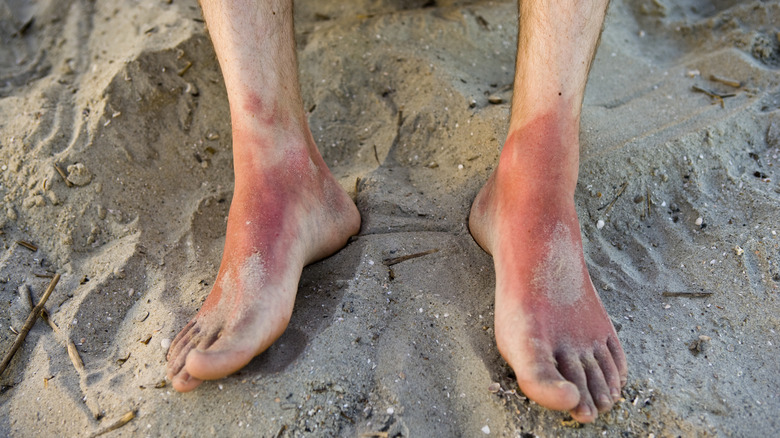Warning Signs From Your Skin You Shouldn't Ignore
Your skin is the largest organ of your body, acting as a protective barrier against infections, germs, and environmental elements. Your skin sheds around 500 million skin cells every day and regenerates every 27 days. With so much activity, it's no surprise that your skin reacts to different situations. Your skin itches from a mosquito bite. Your skin will often burn if it's exposed to the sun. Sometimes the oil and bacteria on your skin will clog your pores, resulting in a pimple.
(Read what your skin can tell you about your health)
Most of the time, these skin changes are harmless and clear up on their own. But what about the ones that don't? Some persistent rashes, discoloration, or unusual bumps might be your body's way of sounding an alarm. While some skin issues stem from external irritants, others can signal something more serious happening beneath the surface. Paying attention to these warning signs could help you catch potential health concerns early.
A red rash on the face or behind the ears could be measles
If you have a fever, cough, runny nose, or itchy eyes, you may think you have a cold or COVID-19. Measles also has these symptoms, but a rash will develop a few days later. The rash may originate behind your ears or on your face, and it usually doesn't itch. As the rash spreads, your skin will have blotchy patches that are red or brown. People with measles may also develop white spots around or in the mouth. Measles can be dangerous for children under 5, but people without the measles (MMR) vaccine can also experience complications such as pneumonia, meningitis, blindness, or seizures.
Without the protection of vaccination, the measles virus can infect 9 out of 10 people who come into contact with it. Measles can be tricky because the symptoms may not appear until up to 10 days after being exposed. That means infected people can quickly spread the disease to others without knowing it. People with measles are still contagious for up to four days after the rash appears.
According to the Centers for Disease Control and Prevention (CDC), measles was eradicated in the U.S. in 2000 due to successful vaccination efforts. However, as of March 7, 2025, the agency was reporting 208 confirmed cases and two deaths related to outbreaks in Texas and New Mexico, with more cases being expected. Most of those cases were among people who were unvaccinated.
Despite these outbreaks, the risk of widespread measles remains low in the U.S. due to immunization programs. However, it is still a problem in other countries, and U.S. travelers who aren't vaccinated may become infected with the virus and may infect others. The CDC advises that travelers should protect themselves from measles by getting an MMR vaccine (if they don't have it already).
Painful swelling in your leg may be deep vein thrombosis
When you bump your leg on a chair, you'll most likely notice a nasty bruise (not to mention pain) a day or two later. A bruise occurs when you rupture small blood vessels just beneath your skin. A blood clot is more serious because it's the result of the blood thickening within your veins and arteries. Blood clots may not be visible like a bruise but instead feel like a cramp or swelling in the affected area, usually the leg. It may also feel warm to the touch, and the area may appear slightly red. Unlike a bruise, a blood clot will persist for months or years.
Blood clots can be especially dangerous when they form in deep veins within your body, a condition known as deep vein thrombosis (DVT). While a clot in a superficial vein is usually not life-threatening, DVT can become serious if the clot breaks loose and travels to your lungs, potentially causing a life-threatening pulmonary embolism.
You can develop DVT after long periods of inactivity, such as a long plane or car ride. People with obesity, varicose veins, autoimmune diseases, or cancer are at a greater risk for DVT. Smoking, pregnancy, and hormone therapy can also increase your risk for DVT.
A reddish-purple rash in the lower legs could come from blood vessel inflammation
Rashes can be frustrating, especially when they itch. While many clear up on their own, a rash that lingers for several days — especially when accompanied by other symptoms — could be a sign of something more serious.
Henoch-Schönlein purpura, now called IgA vasculitis, is a condition that causes inflammation in the blood vessels. It typically appears as small reddish-purple blotches on the lower legs or buttocks. Along with the rash, people with IgA vasculitis may experience joint pain in the knees or ankles, abdominal pain, or digestive issues. In some cases, the condition can affect the kidneys, leading to blood or protein in the urine.
According to the Children's Hospital of Philadelphia, the exact cause of IgA vasculitis is unknown, but it may be triggered by environmental factors like infections. While it primarily affects children under 10, adults can also develop the condition. A 2012 article in the Annals of Indian Academy of Neurology documented a 46-year-old woman who suffered a stroke due to IgA vasculitis. Though such cases are uncommon, this condition can also lead to kidney damage or a bowel obstruction.
A sunburn rash on your palms and feet may be toxic shock syndrome
Toxic shock syndrome (TSS) is an infection caused by Staphylococcus aureus, Streptococcus pyogenes, or Clostridium sordellii bacteria. Staphylococcal TSS may cause symptoms such as fever, headache, low blood pressure, or muscle pain, but you may also see a red, flat rash on your body. After you experience these symptoms, you may notice large sheets of skin peeling off, mostly on your palms and the soles of your feet. Streptococcal TSS may exhibit a similar rash and peeling, accompanied by other symptoms such as low blood pressure, trouble breathing, and bruising easily. C. sordellii may show flu symptoms but does not have the same rash (per Johns Hopkins Medicine). Complications of TSS include damage to the kidney, heart, or liver, but TSS can be fatal.
In the 1970s and '80s, staphylococcal TSS was mostly associated with women using highly absorbent tampons, but the materials used in these tampons have changed. The Mayo Clinic says menstruating women account for half of these TSS infections, and strep TSS can occur in anyone. A recent flu, chickenpox, surgery, cut, or burn could put you at a higher risk for TSS. TSS can also occur if you're a frequent user of contraceptive sponges, diaphragms, highly absorbent tampons, or menstrual cups.





